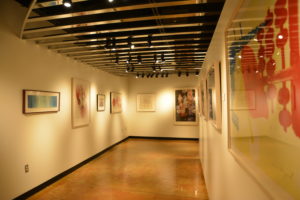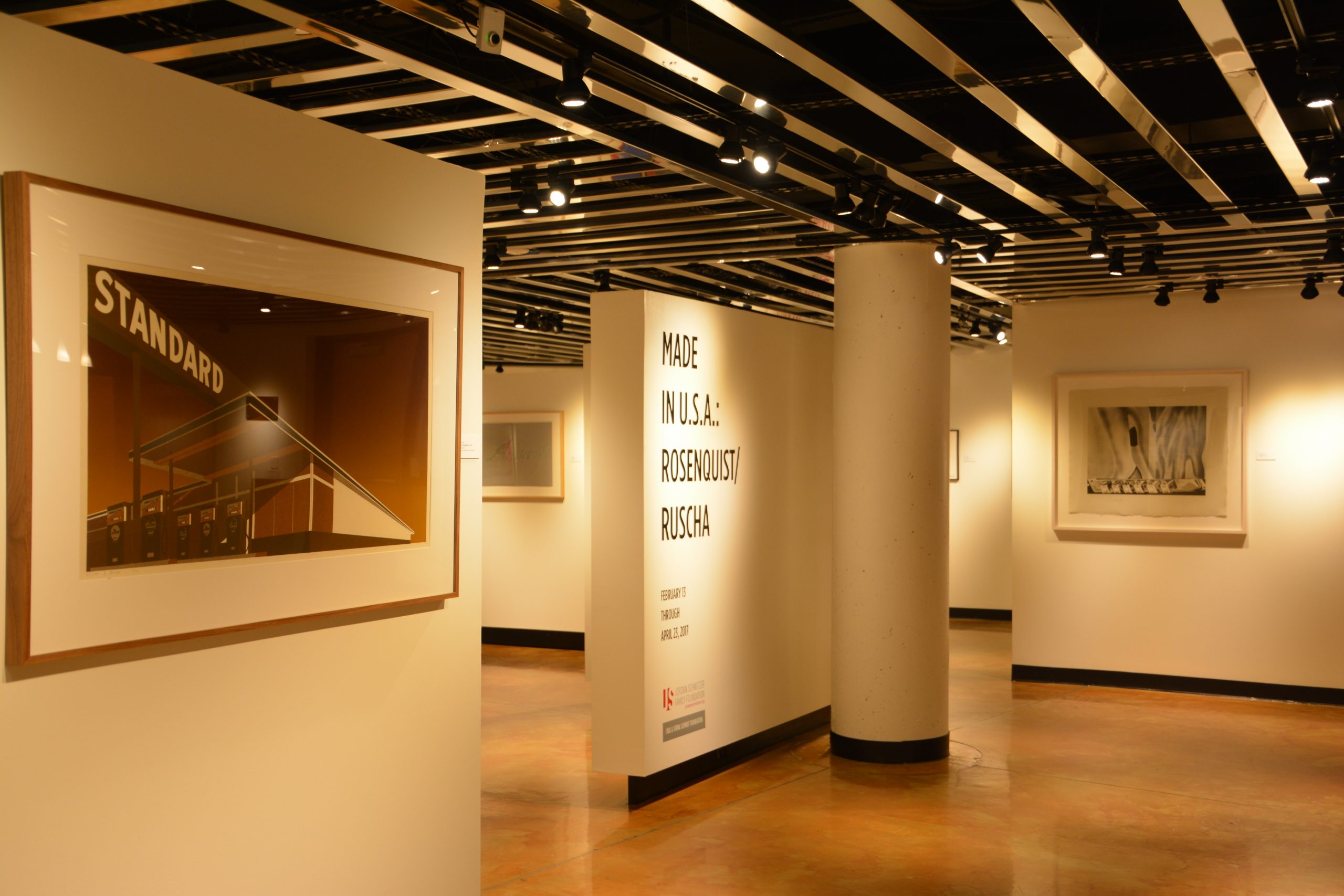Made in U.S.A.: Rosenquist/Ruscha and Recent Acquisitions are the current galleries at the Hillstrom Museum. They feature numerous works that were selected from Jordan D. Schnitzer, the Jordan Schnitzer Family Foundation, and various American artists from different times.
Made in U.S.A.: Rosenquist/Ruscha is mostly comprised of what is labeled as “Pop Art.”
Don Myers, the Director of the Hillstrom Museum describes “Pop Art” as “a term that refers to not only an approach to imagery and subject matter in art but also to an historical time in the history of art when artists such as James Rosenquist and Ed Ruscha and, perhaps especially, Andy Warhol, were creating a particular type of art.”
This type of art largely references the pop culture of the time, and what most people would understand, as previously mentioned, is the works of Andy Warhol of Campbell’s soup or Marilyn Monroe. The two theories about this specific genre of art divide between whether or not the pieces either endorse capitalism or provide an overarching critique, or even satire.
A wall of the exhibit features Rosenquist’s response to being labled a“Pop artist.”
“They [art critics] called me a Pop artist because I used recognizable imagery. The critics like to group people together. I didn’t meet Andy Warhol until 1964. I did not really know Andy or Roy Lichtenstein all that well. We emerged separately,” Rosenquist said.
Of course, the parallels are there. Rosenquist’s works are full of color and reference very popular points of pop culture, even Marilyn Monroe makes an appearance in one of his pieces.
They often clash images, different images splashed or placed over what may seem like completely unrelated images. These clashing images use their specific contrast to make staggering social commentary, such as a condemnation of xenophobia.
His critique of critics “grouping people together” is poignant, but especially easy to understand during the time in which he was making his art and what his art contains.

One of the clear strengths of the Hillstrom’s gallery is the juxtaposition of Rosenquist’s work with that of Ed Ruscha. Ruscha’s pieces are muted in color, usually focusing around one or two main colors. The pieces also have large focal points, a lot of which are just one word. In fact, the Hillstrom has an entire section of screen prints labeled “News, Mews, Pews, Brews, Stews, Dues”.
These works consist of each word, printed on a colored background in a uniform font-type. Paired along with the voraciously bright imagery of Rosenquist, Ruscha’s work stands as its own.
Myers thinks that the gallery feels especially American.
“The images and themes seem quite American, though in a contrasting way, with Ruscha evoking the open spaces of America’s West and Rosenquist calling to mind the frenetic and compacted experience of a large American city like New York,” Myers said.
Senior Jon Dobias notes how some of the appeal for the gallery lies within today’s comparisons.
“I’m beyond excited and looking forward to the Hillstrom’s collection of Pop art because of how we can view the gallery in today’s context,” Dobias said.
The gallery largely came from the Jordan Schnitzer Family Foundation and some of the works have also been part of the Walker Art Museum in Minneapolis.
Myers mentioned that the most difficult part of putting together this collection as opposed to galleries earlier in the year, was that the pieces were largely transported from Oregon, leading to numerous logistic difficulties, as opposed to transporting art from Mankato.
Recent Acquisitions is the other gallery on sight at the Hillstrom. It shows off new work acquired either through donation or purchase and even features glass blowing. In Recent Acquisitions, those from southern Minnesota might find interest in a piece by Adolf Dehn who grew up in Le Sueur county, just miles away from Gustavus. His piece depicts a critique of high society through his use of imperfect detail and black and white imagery.
Made in U.S.A.: Rosenquist/Ruscha and Recent Acquisitions will be on display until April 23.
